During the short, few months between the end of the regular season and the NFL Draft, it’s impossible to gain an in-depth understanding of the hundreds of college prospects coming into the league.
As a beat reporter covering one team, I do my best to at least achieve a surface-level understanding of as many of the prospects as I can, but admittedly lean heavily on the work of dedicated and trusted analysts such as the NFL Network’s Daniel Jeremiah and Lance Zierlein, The Athletic’s Dane Brugler, Pro Football Focus and several others to help formulate that basic understanding of the players.
It’s not until the Lions select the team’s draft class that I can truly zero in and do my own deep dive on the new additions. With that in mind, just as I have in years past, I intend to share what I’m learning in my studies of a few of the newest Lions, starting with a scouting report on the team’s second-round pick, defensive end Josh Paschal.
Games watched: vs. Missouri (Sept. 11), vs. Florida (Oct. 2), vs. LSU (Oct. 9), at Georgia (Oct. 16), at Mississippi State (Oct. 30)
(Note: In clips posted below, Paschal is No. 4).
► Bio: A highly coveted, four-star recruit out of Olney, Maryland, Paschal committed to Kentucky despite offers from other major programs, including Alabama, Notre Dame, Ohio State, USC, Michigan State and Oklahoma.
A four-time letter winner and the first three-time captain in school history, he played sparingly his first two seasons, missing much of his sophomore campaign while undergoing year-long treatment for melanoma.
A starter his final three seasons, Paschal earned first-team all-conference honors as a fifth-year senior, while being named the Jason Witten Man of the Year as the NCAA player best demonstrating exceptional leadership, courage and integrity.
► Statistics: 2017: Eight games, 16 tackles, 3.5 sacks
2018: Two games, three tackles
2019: 12 games, 34 tackles (9.5 for a loss), 3.5 sacks, two forced fumbles
2020: 11 games, 32 tackles (6.5 for a loss), one sack, one interception
2021: 12 games, 52 tackles (15 for a loss), five sacks, one forced fumble
► Durability: Paschal showed all the toughness you could want, returning for the end of the 2018 season after a series of surgeries on his foot and extensive treatments to address the area affected by melanoma. He again showed that heart against Florida last season, briefly exiting the game in the fourth quarter with a leg injury before returning for the final two snaps of a game-saving defensive stop in the red zone.
From 2019-2021, he missed just two games, including last year’s bowl game with an undisclosed injury. That issue also sidelined him for the Senior Bowl at the end of January.
► Athletic profile: Between the combine and his pro day, Paschal tested very well. His 4.77-second 40-yard dash is historically well above average for a defensive end, and nowhere near as good as his 10-yard split and vertical/broad jumps, which indicate elite-level explosion. Paschal also put up 30 reps on the bench press, which is a high-end figure for the position.
Paschal didn’t participate in the short shuttle or 3-cone drill, which are designed to showcase a prospect’s agility. Given his stocky frame, this was likely a calculated design by his representation and training staff, knowing he wouldn’t test particularly well.
At 6-foot-3 with 32¾-inch arms, Paschal doesn’t have ideal height or length, but at 268 pounds, he has adequate bulk to play across a defensive front. For what it’s worth, the Lions are listing him 10 pounds heavier on the team’s official roster.
► Usage: In terms of his deployment along Kentucky’s front, Paschal epitomizes versatility. While primarily aligned on the edge, either outside the shoulder or heads up with the offensive tackle, the Wildcats didn’t hesitate to regularly move Paschal inside.
Unlike many edge rushers who slide inside, those shifts weren’t limited to obvious passing situations. Mostly, he would operate from the B gap (between the tackle and guard) when inside, but also was sporadically utilized in an A gap (between the center and guard) or even directly over the center in a nose tackle alignment.
Paschal showed equal comfort and proficiency when lining up on the right and left side of the defensive formation.
► Motor: Kentucky leaned heavily on Paschal, rarely asking him to leave the field. He averaged more than 54 defensive snaps per game, while also contributing on special teams.
At the line of scrimmage, his motor runs hot. Even when his rush is stymied, his legs never stop churning. He expends less energy unnecessarily chasing plays downfield, which is understandable given his weekly workload demand.
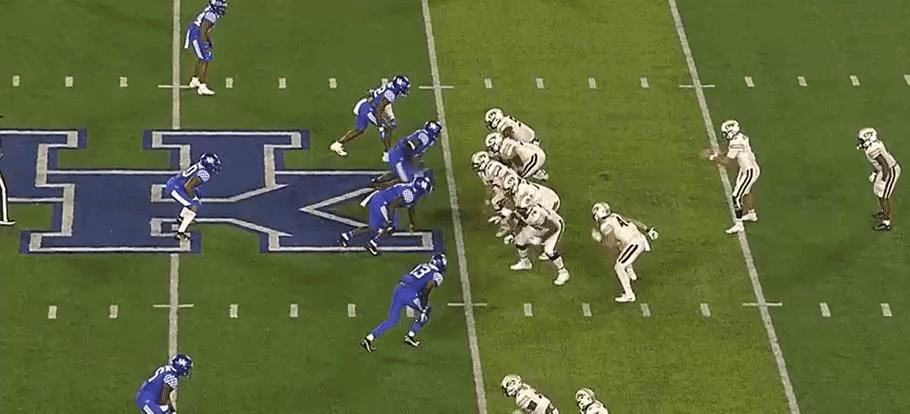
► Pass rush: On the edge, Paschal offers disappointingly little when it comes to getting after the passer. The explosiveness he displayed in his athletic testing is largely negated by the fact he’s consistently late out of his stance on the snap. Additionally, he lacks the length and bend to threaten the edge, almost never generating pressure around the outside shoulder of the tackle.
Paschal does play with good leverage and violent hands, getting strong initial push back with his bull rushes, but doesn’t show any reliable counter moves once an offensive tackle is able to re-anchor and slow the defender’s momentum.
Where Paschal has success on the edge is attacking the inside shoulder of an offensive tackle, throwing a quick stab to neutralize the inside arm, getting narrow and exploding into and through the B gap. Although Kentucky didn’t utilize many rush games up front, this ability points to some untapped potential setting up stunts because it commands the attention of both the tackle and guard.
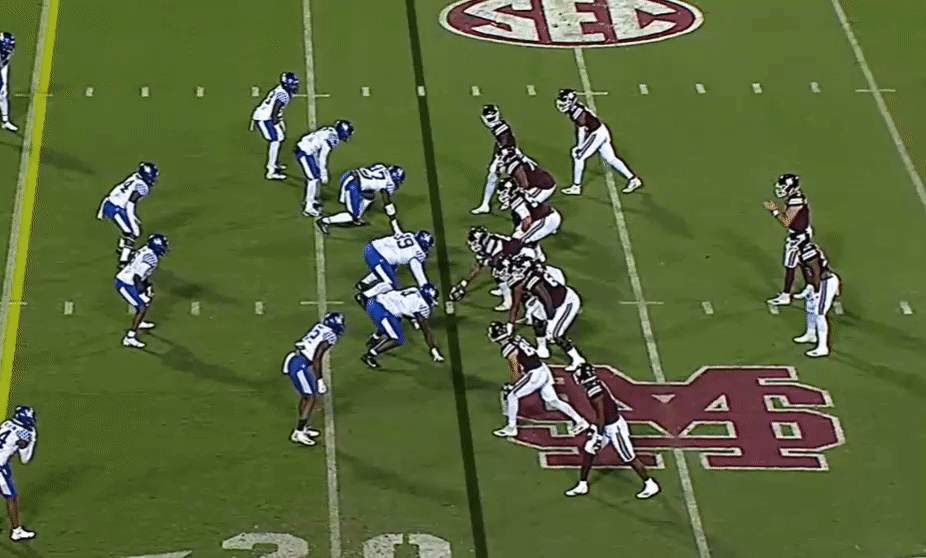
Paschal’s ability to power through interior gaps ports to when he lines up inside. His length doesn’t possess as much of an issue when working directly against a guard or center, allowing him to routinely slice into the backfield and disrupt the pocket.
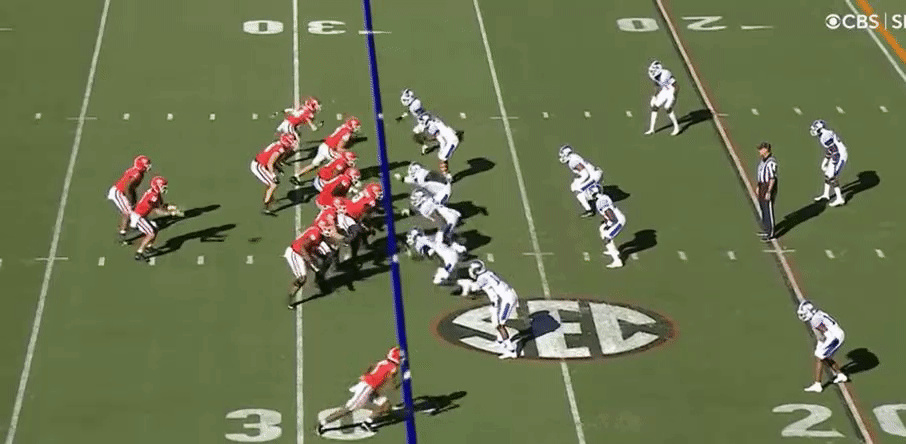
This skill also showed up when he blocked a field goal against Florida.
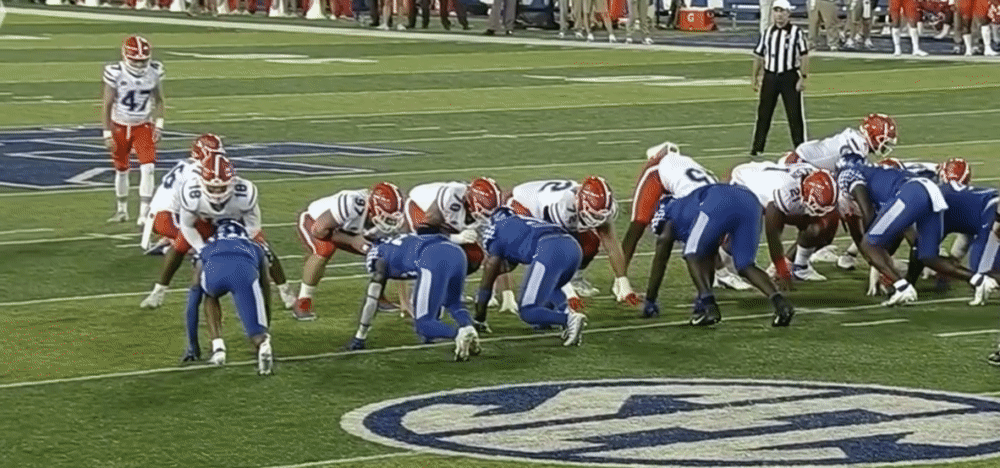
► Run defense: This area of Paschal’s game is more polished than his pass-rushing. On the outside, he consistently does a solid job setting an edge and controlling his gaps. Despite not having the length to match most offensive tackles, he routinely showed the ability to stack and shed blocks to make stops at or near the line of scrimmage.

When defending zone reads, it appeared Kentucky’s scheme regularly called for Paschal to attack the halfback, forcing the quarterback into a decision, leaving a smaller/quicker defender responsible for controlling the edge on QB keeps.
Paschal’s ability to pressure interior gaps as a pass-rusher are equally, if not more useful when defending the run. In the five games reviewed, he was able to register multiple tackles behind the line of scrimmage this way.
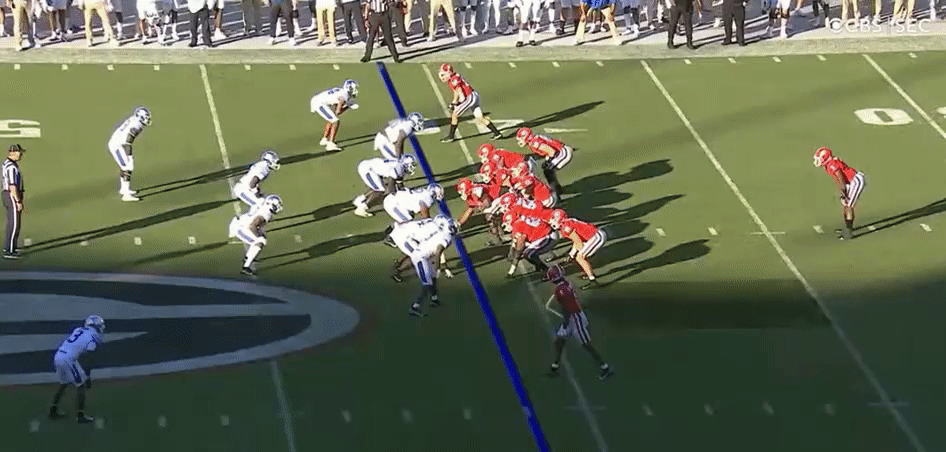
Double teams from interior alignments proved problematic. Despite his above-average strength and quality play leverage, he doesn’t have the necessary mass to hold up against multiple blockers.
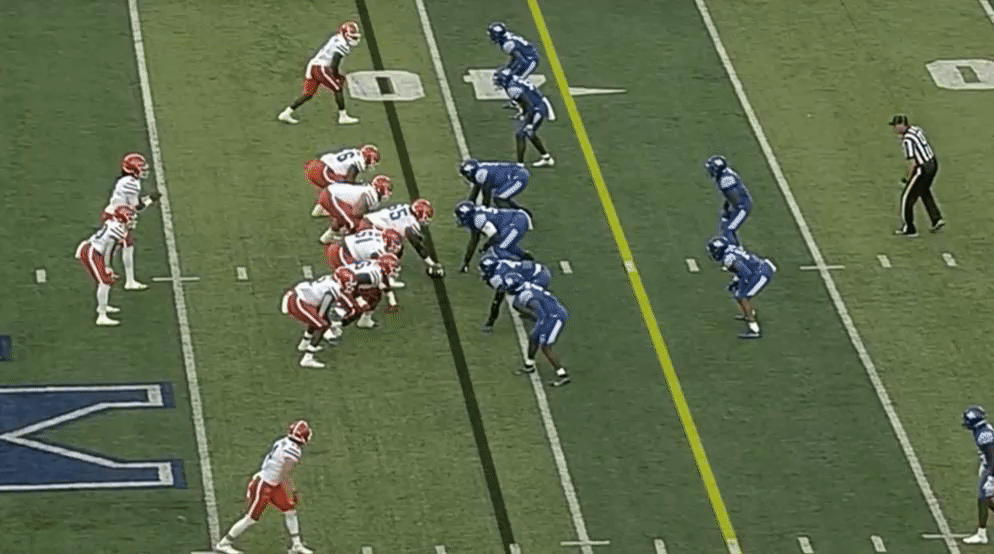
Awareness: Whether rushing the passer or playing the run, Paschal generally does a good job keeping his head up and uses his eyes to process what’s happening in the backfield. Some of his play and block recognition is slow, particularly with screen passes and cut blocks. Mississippi State blockers consistently went low and managed to get him to the ground four times.
Conclusion: From both football and off-field character standpoints, it’s clear what the Lions see in Paschal. Even as a rookie, he has the ability to be a tone-setter, culturally. On-field, there’s always value in versatility and motor. He should be able to carve out an early role on both defense and special teams.
Defensively, his best attribute is attacking the interior gaps. It’s easy to see him having a sub-package role in clear passing situations as an interior lineman who can stress opposing guards and centers.
From a developmental standpoint, the Lions should focus on harnessing his explosiveness, getting him to time the snap better. His length and bend will almost certainly keep a ceiling on his outside-rush abilities, but getting out of his stance quicker should increase the effectiveness of his bull rush and inside rush moves.
jdrogers@detroitnews.com
Twitter: @Justin_Rogers